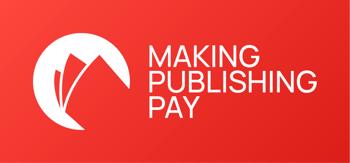
Here are nine smart publishing stories that might make you think differently about your own media brands. The leaders of these media businesses will be sharing their journey at Making Publishing Pay on 25/6 February.
Over the last few months, I have interviewed these media CEOs and directors in my role as conference chair, explored the innovations they have made and what they have learned along the way. There’s a common thread of actively listening to customers, and developing a diverse range of products and services that meet their needs.
1. How AgriBriefing has built a global B2B media business through acquisitions, event launches and developing premium subscriptions.
It all started with Farmers Guardian, a traditional print title that has switched to membership revenues. CEO Rory Brown has been very successful at stalking acquisitions of undervalued assets, such as LAMMA and Feed Info, and then developing global premium subscriptions businesses. He believes very strongly in the importance of researching customers and developing content-based products that solve their business problems.
2. How TTG Media researched their audience and relaunched their print magazine. Plus, how targeting niches has helped double revenues in the last six years.
Travel Trade Gazette is a 60-year-old weekly newspaper for travel agents. CEO Daniel Pearce bought it out from UBM six years ago and has launched a series of niche events targeting different sectors, such as cruises, and the LGBT community in travel. After a thorough research programme, they relaunched the magazine itself, winning PPA and BSME awards, and showing that print is still valuable to readers when well produced.
3. How Haymarket reinvigorated What Car by behaving like a tech business. And how the print magazine adds to the brand.
Faced with the threat of digital car-buying start-ups, Rachael Prasher, MD, invested in tech to develop What Car’s site into a new car lead-gen product. Dealers can upload car stock and bid for sales while users are searching, so users can get real-time offers of cars. Haymarket decided to develop this product in-house, which has prompted significant cultural change, and start to behave like a tech business.
4. Why The Drum believe that marketing best practice can change the world, and how it is powering their membership revenues.
The Drum Network is a peer best practice and networking community, whose agency members access online learning and live events. The Drum Recommends works like “trip advisor for agencies” – agencies pay to be listed and receive reviews and ratings. Diane Young, CEO, is keen to grow membership revenues and expand further into the US, following their recent move to set up an office in NYC.
5. How the British Journal of Photography bundled awards, content and commissions to create an international membership programme for aspiring photographers.
Marc Hartog, CEO of 1854 Media, has launched a series of international photo competitions attracting 90,000 submissions. This prompted the launch of a membership programme for aspiring photographers, 1854 Access, including free awards entry, mag & digital content plus access to paid commissions from commercial partners, which is growing rapidly, and prompting members to engage with each other online.
6. How Chemical Watch used customer research to reinvent their subscription proposition, and significantly grow revenues per customer.
Instead of a series of distinct publications, marketed individually, Chemical Watch offer their customers a single membership providing tailored access to their teams to the whole range of articles and insight. Richard Butterworth, commercial director, brought in tech partners to redesign their content, established a customer advisory panel and a customer success team who ensure that members get a good return on their investment from using their products.
7. How MarTech Alliance built a community from scratch, from book clubs to pop-up parties and festivals.
Carlos Doughty, CEO and Founder of MarTech Alliance, launched the #MarTechFest in London, now attracting 1250 senior enterprise marketers. They have experimented with pop-up parties, online training, and even a MarTech book club to engage their community. Carlos always aims to make his live events an entertaining and sociable experience for marketers who attend as well as a useful event.
8. How independent publisher Healthcare Business International launched a premium intelligence platform in less than a year.
HBI provided paid newsletters and a conference in the private healthcare sector. They created a visual version of their databases so subscribers could easily search and create market share charts. The tech investment has already paid back in increased subscription revenue, showing that you don’t need a vast development budget to launch a premium intelligence product.
9. How The Lawyer has grown subscriptions to 40% revenue from scratch in five years, and how this has changed the role of the editorial team.
Catrin Griffiths, editor, believes it is the quality of the editorial analysis that adds value to news and data. A year ago, they launched a premium subscription, Litigation Tracker, with details of all disputes in the English courts. Rather than having a separate data team, journalists at The Lawyer work across all disciplines: news, analysis, features and data.

About the Event
Making Publishing Pay features all these stories and many other media innovators in an interactive two day conference on 25 & 26 February at Excel London.
- A panel debate on “How to sell your media business” with media owners who have recently exited, including Procurement Leaders, Electric Word and AI Business.
- Eight workshops where media leaders and experts will share practical tips on digital subscriptions, print, events, digital marketing, digital products, managing talent and technology.
- Case studies from: Immediate Media, London Review of Books, Dennis, Burlington Media, Ampere Analysis, CRU, Positive News, Maddox Events, GMAC Media, Business of Fashion and many more.
Early bird rates are available till 31 January.










